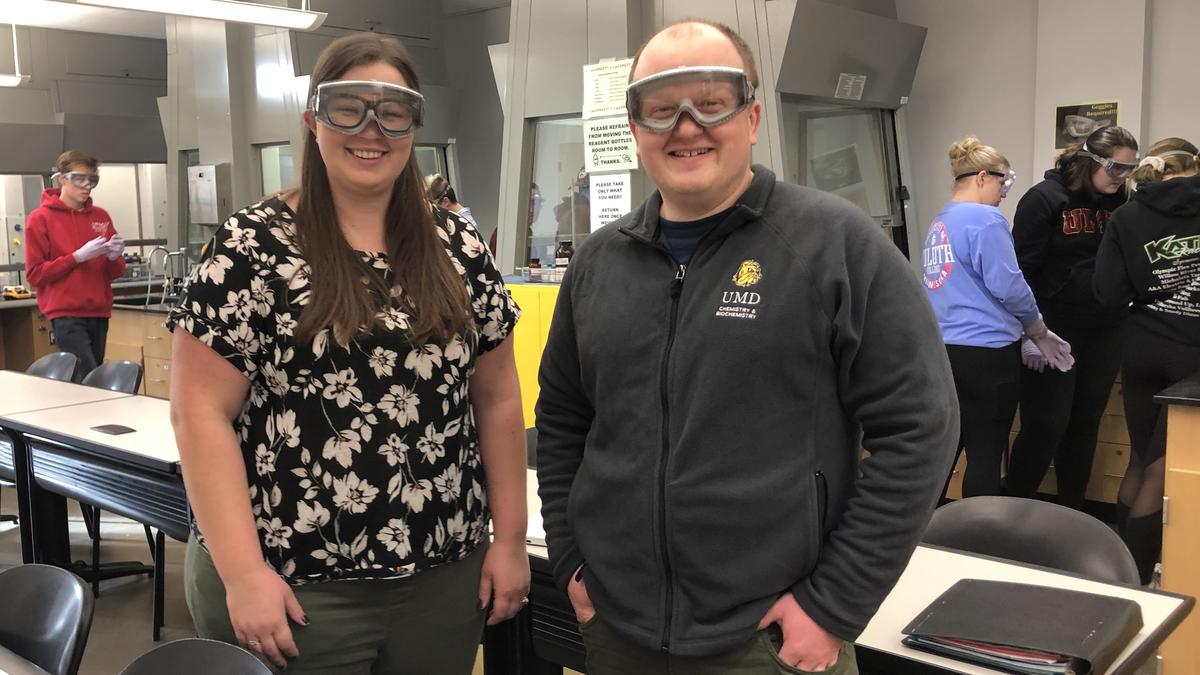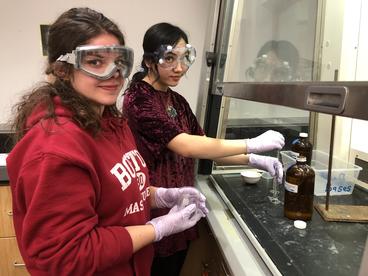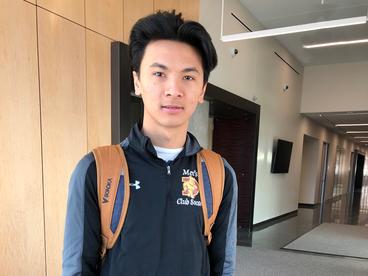Two students huddle next to each other. Their goggles fog up as they concentrate. They watch a glass tube drip distilled water into a beaker holding one tablet of Vitamin C. There are no instruction manuals. A week earlier their general chemistry class studied how to calculate concentrations. This week, each of the nine pairs has a different tablet. They each need to determine the concentration of vitamin C in their own tablet. They need to design an experiment that will give them a number. They need to know the concentration. Is it ninety percent? Seventy percent? How much of their tablet is Vitamin C. Can they do it?
Toss out the Cookbook
While it doesn’t seem like a big change, Jacob Wainman, assistant professor of chemistry, says this process tosses out the “cookbook method of general chemistry.” Students aren’t given a step-by-step plan. Instead they apply their own understanding to find a solution.
Victoria “Tori” Fringer, a graduate student getting her masters in chemistry, sees the value in the new system, and Tori ought to know. Tori has been a general chemistry teaching assistant for three years, teaching the traditional method. “[The new process] allows students to take control [of the lab].”
Professor Wainman received help from Tori to revise the course. “There was push back from the students as they compared [their] experiences to their friends and other students. It was frustrating for them at first, but [eventually] they felt like they could take control of their lab.” Tori appreciates that the new method of chemistry “encourages students to question things” and “teaches them that there is no right answer.”
Tori hopes to become a high school chemistry teacher and bring this method of learning into the curriculum. She especially wants to teach in rural schools.
Testing Two Methods
In 2018, Wainman started altering the curriculum of some general chemistry classes for about 90 biochemistry and chemistry majors as a testing group. He set up a system to test the traditional plan with the new plan, which uses two-week experiment blocks.
When he was discussing this with other chemistry professors they agreed that Wainman’s new classes would be “more like a real-life chemistry research lab.”
Wainman has a lively set of students who are doing undergraduate research. Some of them are evaluating Wainman’s new system. The student researchers are surveying classes who have completed the non-traditional course. One student who experienced Wainman’s revised method was Duc Nguyen, who was a biochemistry major at the time. Duc says the data shows a trend in popularity “towards the revised course.”
Any system is desirable that can lead to high impact practices, such as undergraduate research, internships, being a teaching assistant, and taking advanced courses. Wainman’s gut and Tori’s analysis show that the revised classes may have powerful results. While it is too early to tell, the preliminary data shows that after taking the non-traditional class students were more likely to “feel prepared for advanced classes and research.”
More research will tell if improved teaching methods such as Wainman’s may be beneficial to college students of all backgrounds.
About the Department of Chemistry and Biochemistry
This story was written by UMD student Bailey Jacobson, who is double-majoring in English and writing studies. Bailey works with Cheryl Reitan in University Marketing and Public Relations.


